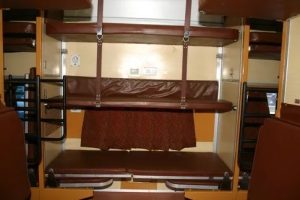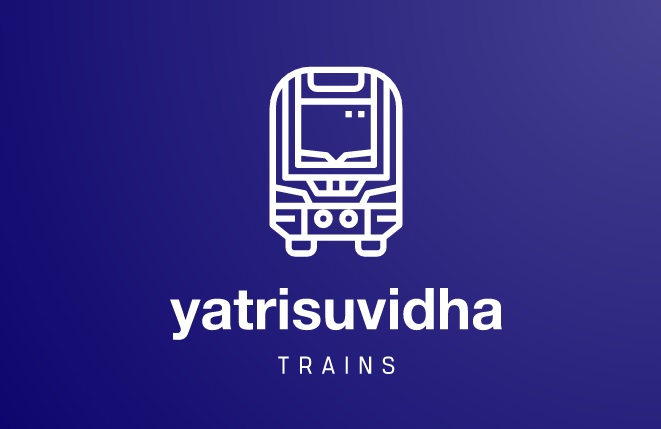
Traveling by train in India is more than just a means of transportation; it is an experience steeped in rich culture, diversity, and the heart of Indian life. Among the various seating arrangements available in Indian trains, the aisle seat holds a unique place, offering both advantages and disadvantages to passengers. In this article, we will explore the significance of aisle seats in Indian trains, their features, benefits, drawbacks, tips for selecting the best seats, and much more.
Before delving into the specifics of aisle seating, it’s essential to understand the broader context of Indian Railways. Established in 1853, Indian Railways is one of the largest railway networks in the world, catering to millions of passengers daily. The network spans over 67,000 kilometers and connects nearly every corner of the country. Indian Railways operates a variety of train services, including express trains, passenger trains, and luxury trains, each offering different classes of travel.
1.1 Classes of Travel
Indian trains offer several classes of travel, each designed to cater to the diverse needs of passengers. The main classes include:
General Class: This is the most economical and crowded class, with basic seating arrangements. Reservations are not required.
Sleeper Class: A popular choice for long-distance travel, it features bench-style seating that can be converted into sleeping berths.
3AC, 2AC, and 1AC Classes: These are air-conditioned classes, with 1AC being the most luxurious. They provide comfortable seating and sleeping arrangements in a cabin-like environment.
Chair Car Class: This class is typically used for shorter journeys and features reclining seats arranged in rows.
1.2 Aisle Seats in Different Classes
Aisle seats are available in various classes, with different configurations and features. Understanding these configurations can help passengers choose the best option for their journey.
- The Importance of Aisle Seats
Aisle seats, as the name suggests, are located next to the aisle in the train compartment. They are considered desirable by many passengers for several reasons:
2.1 Accessibility
Aisle seats provide easier access to the exit and restrooms. This is particularly important for elderly passengers or those with mobility issues. Being next to the aisle allows passengers to move in and out without disturbing others.
2.2 Freedom to Move
Passengers sitting in aisle seats can stand up, stretch, or move around without having to climb over others. This is especially beneficial during long journeys when the need to shift positions or take breaks arises.
2.3 Carrying Luggage
For those traveling with a significant amount of luggage, an aisle seat allows for easier handling of bags. Passengers can quickly place their bags in the overhead racks or retrieve them when necessary without inconvenience.
2.4 Social Interaction
Aisle seats offer the opportunity for better interaction with fellow passengers and train attendants. Whether it’s to engage in conversation, ask for assistance, or enjoy a meal, aisle seats provide a social advantage.
- Features of Aisle Seats in Indian Trains
The features of aisle seats can vary significantly based on the class of travel. Let’s explore some typical features found in different classes.
3.1 Sleeper Class Aisle Seats
In the sleeper class, aisle seats are typically wider than those in the other classes. They are arranged in a manner that allows for multiple berths above them. Features include:
Bunk Beds: Aisle seats usually have bunk beds overhead, allowing for comfortable sleeping arrangements at night.
Curtains: Many compartments have curtains for privacy, making it easier for passengers to rest.
Basic Comfort: While the seats are not as plush as in air-conditioned classes, they provide basic comfort for budget travelers.
3.2 AC Sleeper Class Aisle Seats
In the AC sleeper class, aisle seats come with additional comforts:
Cushioned Seats: The seats are more comfortable and provide better back support.
Reading Lights: Individual reading lights are available for each seat.
Power Outlets: Some coaches are equipped with power outlets for charging electronic devices.
3.3 AC Chair Car Aisle Seats
Aisle seats in the AC chair car class are designed for short to medium-distance journeys. Features include:
Reclining Seats: Aisle seats can recline for added comfort during travel.
Tray Tables: Foldable tray tables for meals or laptops are available at each seat.
Clean and Air-conditioned Environment: The ambiance is more pleasant due to air conditioning and cleaner facilities.
3.4 1AC Aisle Seats
In 1AC, the most luxurious class, aisle seats provide a lavish experience:
Private Cabins: Some trains feature private cabins with a dedicated aisle seat.
Flat-Bed Option: Seats can convert into a flat bed for overnight journeys.
Enhanced Amenities: Passengers receive complimentary meals, bedding, and toiletries.
- Advantages of Choosing an Aisle Seat
Selecting an aisle seat has its benefits. Here are some of the primary advantages:
4.1 Convenience
Aisle seats are generally more convenient, allowing passengers to get up without disturbing others. This is particularly useful for families traveling with young children or elderly relatives.
4.2 Quick Access to Amenities
Passengers can quickly access the restroom or the pantry car without navigating through rows of other passengers. This can be a significant advantage on long journeys where comfort and hygiene are essential.
4.3 Better Views
While window seats are often prized for the view, aisle seats offer their charm. Passengers can look out into the aisle and enjoy interactions with fellow travelers, staff, and the passing scenery from different angles.
4.4 Ideal for Socializing
For those who enjoy meeting new people, aisle seats offer a more social environment. Passengers can easily engage in conversations with others nearby or those passing by.
- Disadvantages of Aisle Seats
While aisle seats come with many advantages, they also have some drawbacks:
5.1 Less Privacy
Aisle seats may feel less private, especially in crowded compartments. Passengers seated in the aisle are more exposed to foot traffic, announcements, and disturbances.
5.2 Potential for Disruptions
People frequently moving up and down the aisle can cause interruptions. Passengers sitting in aisle seats may need to stand up repeatedly to let others pass, which can be inconvenient during long journeys.
5.3 Proximity to Doors
In some cases, aisle seats are closer to train doors, which can lead to noise and disruptions as passengers board and alight. This may be bothersome during the night when trying to sleep.
- Tips for Choosing the Best Aisle Seat
Choosing the right aisle seat can enhance the travel experience. Here are some tips for selecting the best option:
6.1 Book Early
Train tickets in India can sell out quickly, especially during peak seasons. Booking early increases your chances of securing an aisle seat in your preferred class.
6.2 Check the Seat Map
Most Indian Railways ticket booking platforms allow you to view the seat map of the train. Take advantage of this feature to choose a seat that suits your needs.
6.3 Avoid Seats Near the Pantry Car
While aisle seats provide easy access to amenities, sitting too close to the pantry car can lead to noise and foot traffic. Opt for aisle seats located further away for a quieter experience.
6.4 Choose Lower Berths
In sleeper classes, if you’re booking a journey that includes sleeping, consider choosing an aisle seat that is also a lower berth. This will make it easier to access your belongings and rest comfortably.
6.5 Consider Timing
When booking, consider the time of your journey. If traveling overnight, ensure your seat has appropriate privacy features, like curtains or partitions, for a more restful experience.
- Aisle Seat Etiquette
Traveling by train involves shared spaces, and maintaining etiquette is essential for a pleasant journey:
7.1 Respect Fellow Passengers
Be mindful of fellow passengers when standing or moving around. Try to minimize disruptions as much as possible.
7.2 Keep Aisles Clear
Ensure that bags and personal items do not obstruct the aisle. This is crucial for safety, especially during emergencies.
7.3 Use Headphones
If you’re listening to music or watching videos, use headphones to avoid disturbing others.
7.4 Be Considerate During Meal Times
During meal service, be considerate of others. If you have an aisle seat and are eating, be cautious when leaning over to avoid spilling food or drink.
- Accessibility for Differently-abled Passengers
Indian Railways has made significant strides in improving accessibility for differently-abled passengers. Aisle seats play a crucial role in this regard:
8.1 Reserved Seating
Many trains reserve aisle seats for differently-abled passengers, ensuring they have easier access and greater comfort.
8.2 Facilities for Assistance
Train staff are typically trained to assist differently-abled passengers, helping them navigate through the aisles and find their reserved seats.
8.3 Accessible Toilets
Most modern trains are equipped with accessible restrooms located near aisle seats, allowing for convenience and dignity for differently-abled travelers.
- Traveling with Children in Aisle Seats
Traveling with children can be both rewarding and challenging. Here’s how aisle seats can be advantageous for families:
9.1 Easier Movement
Aisle seats make it easier for parents to help their children

Leave a Reply